Winter Lawn Care: Essential Tips to Keep Your Grass Healthy During the Cold Months
As temperatures drop and frost settles, your lawn faces a seasonal transformation that tests its resilience. Winter brings dormancy, stunted growth, and the persistent challenge of frost, each posing unique risks to the health and appearance of your grass. Lawn owners often ask: How do you care for grass in the winter? Does it require the same effort as other seasons? What are the most common pitfalls?
Winter lawn care doesn’t have to be overwhelming, but it does require understanding your grass’s needs during this dormant phase. Issues like soil compaction, snow mold, and frost damage can undo the work you’ve put in during the rest of the year. With thoughtful preparation and consistent attention, you can minimize these risks and set your lawn up for success when spring arrives.
From careful preparation to consistent maintenance and addressing potential problems, winter lawn care is more than just keeping things tidy – it’s about safeguarding your lawn’s vitality during its most vulnerable months. In the sections ahead, we’ll explore how to prepare your lawn for the cold, maintain its condition throughout the season, and troubleshoot common winter challenges.
You Will Learn:
- How to prepare your lawn for winter
- The most important practices for winter lawn care
- The most common problems in winter lawn care and how to solve them
- What practices apply to warm-season grasses versus cool-season grasses
- Preparing your lawn for spring recovery
- FAQs
- Conclusion
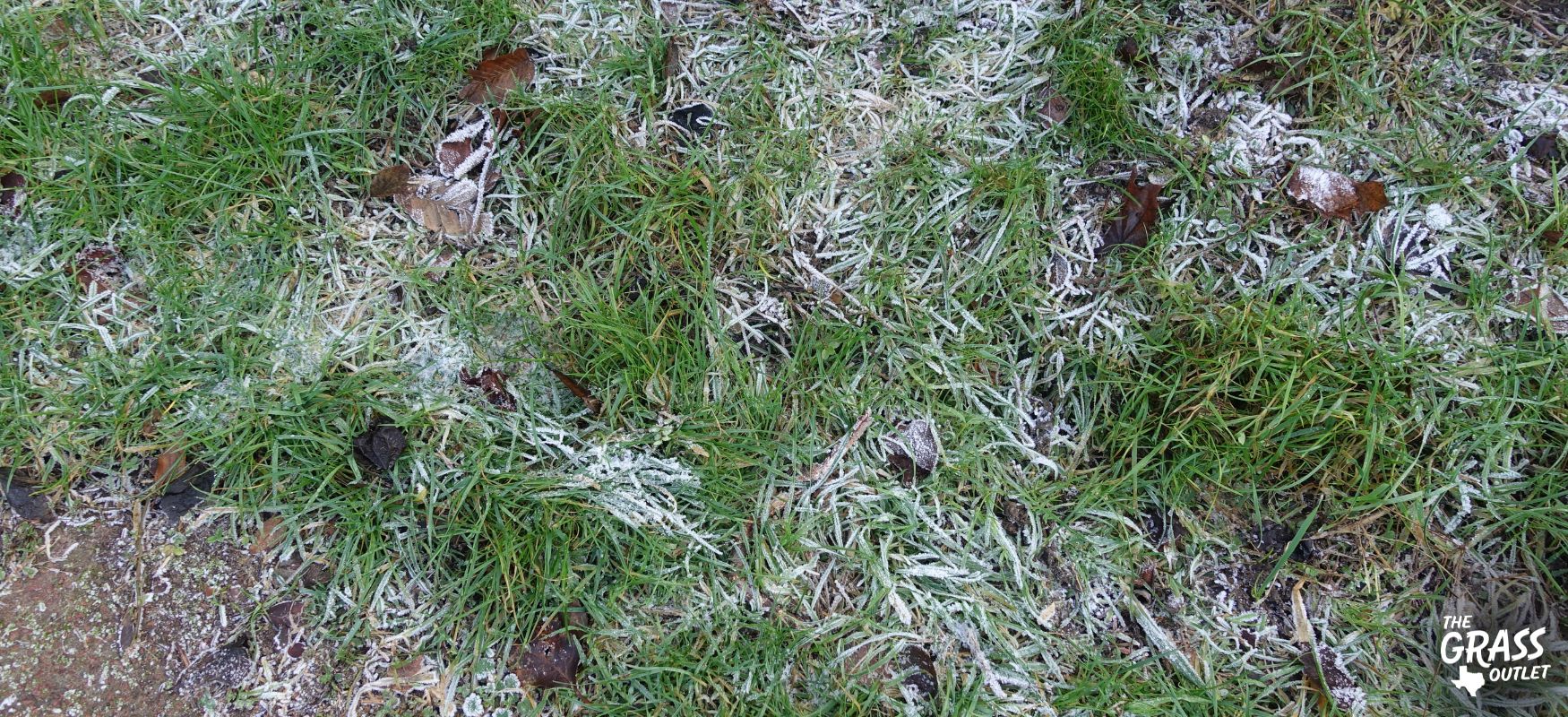
How Is Grass Prepared for Winter?
Preparing your lawn for winter is essentially about laying the foundation for a healthy lawn to thrive in the spring. By focusing on aeration, fertilization, thorough cleaning, and strategic mowing, you’ll ensure that your lawn withstands the challenges brought by the winter months.
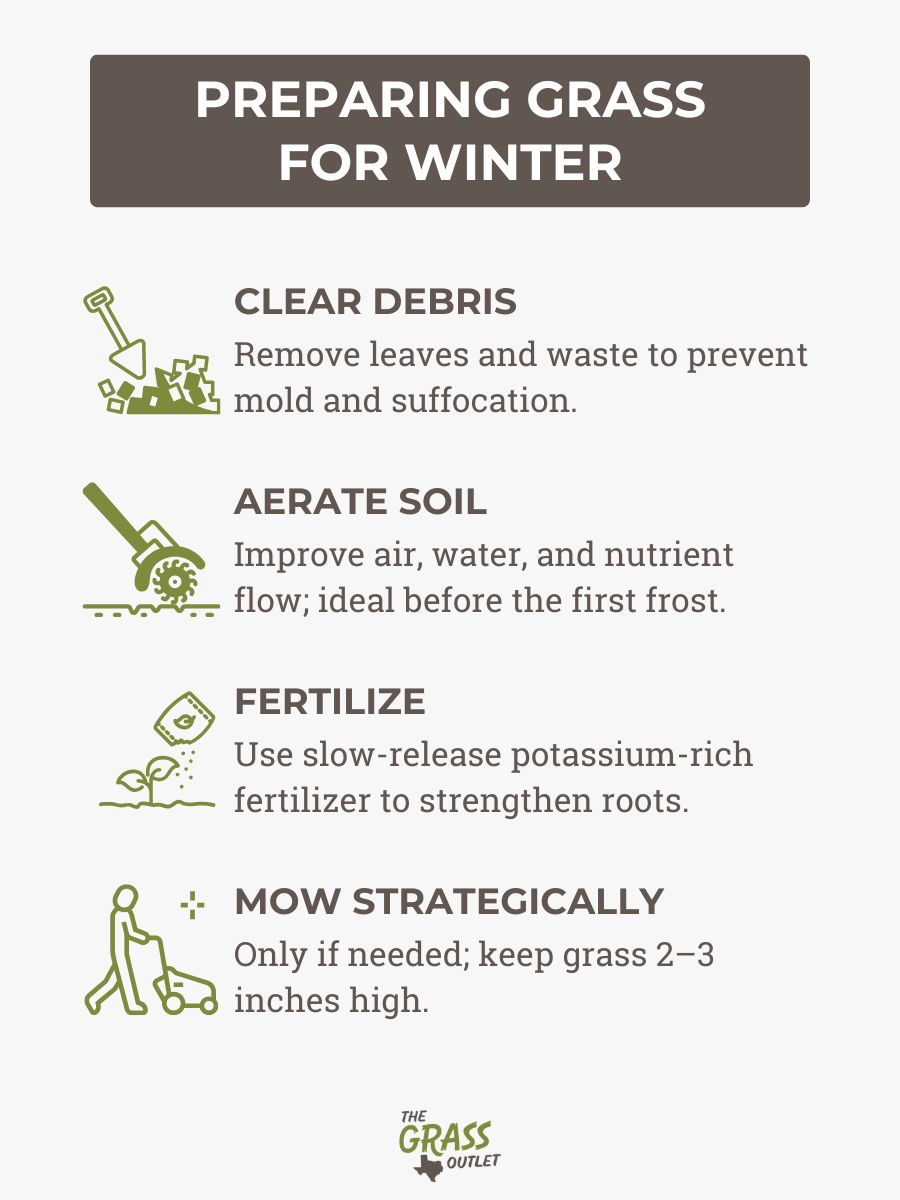
Clear Debris and Leaves
The first step in preparing your lawn for winter is removing leftover leaves, debris, branches, and other waste. This process should continue throughout the winter, as the wind often brings in debris.
When leaves and waste accumulate, they create a barrier that blocks light and oxygen from reaching the grass. This can lead to suffocation, mold growth, and diseases such as snow mold, severely damaging your lawn. Piled-up leaves retain moisture, creating conditions for harmful microorganisms and insects to thrive.
Regular lawn cleaning is essential to ensure an unobstructed flow of light and oxygen. Rakes or leaf blowers can remove leaves and other debris, making maintaining a tidy and healthy lawn easier.
Why Is Lawn Aeration Important Before Winter?
Aeration of lawns before winter is one of the most crucial steps for maintaining vitality. This process involves creating small holes in the soil to prevent compaction and improve the flow of air, water, and nutrients to the roots. This ensures the grass gets everything it needs to survive the winter months. Aeration is essential for lawns with frequent traffic.
The ideal time for aeration is about a month before the first frost, which gives the grass enough time to recover. Manual tools can be practical solutions for smaller lawns, while motorized aerators are more effective for larger areas.
Why Is Slow-Release Fertilizer Recommended Before Winter?
Slow-release fertilizer ensures a gradual release of nutrients into the soil, particularly beneficial for winter conditions. This provides the grass with a steady supply of potassium over an extended period, avoiding sudden growth or overburdening the roots. As a result, the lawn becomes more resilient and better prepared to withstand low temperatures and recover in the spring.
Winterizing fertilizers are typically rich in potassium, which strengthens the grass’s cellular structure and enhances its resistance to cold and snow. Potassium also contributes to stronger roots, helping the grass prepare for its dormant phase. If a soil test indicates the need, lime or sulfur can be added to adjust the pH levels. Fertilization should not be done during winter but resumed when spring arrives.
How to Mow Grass During Winter
Mowing the lawn during winter should generally be avoided unless necessary. At this time of year, the grass is typically dormant and requires minimal maintenance.
If you decide to mow, raise the mower blade height to protect the grass. The cutting height should be between 2 and 3 inches. Proper height helps develop stronger and more resilient roots, even when the grass blades are exposed to frost and snow.
Overall, mowing during winter is not advisable.
Essential Winter Lawn Care Practices
A dormant lawn refers to grass that is currently resting and not growing. Although the grass may appear brown or be covered in snow, it remains alive.
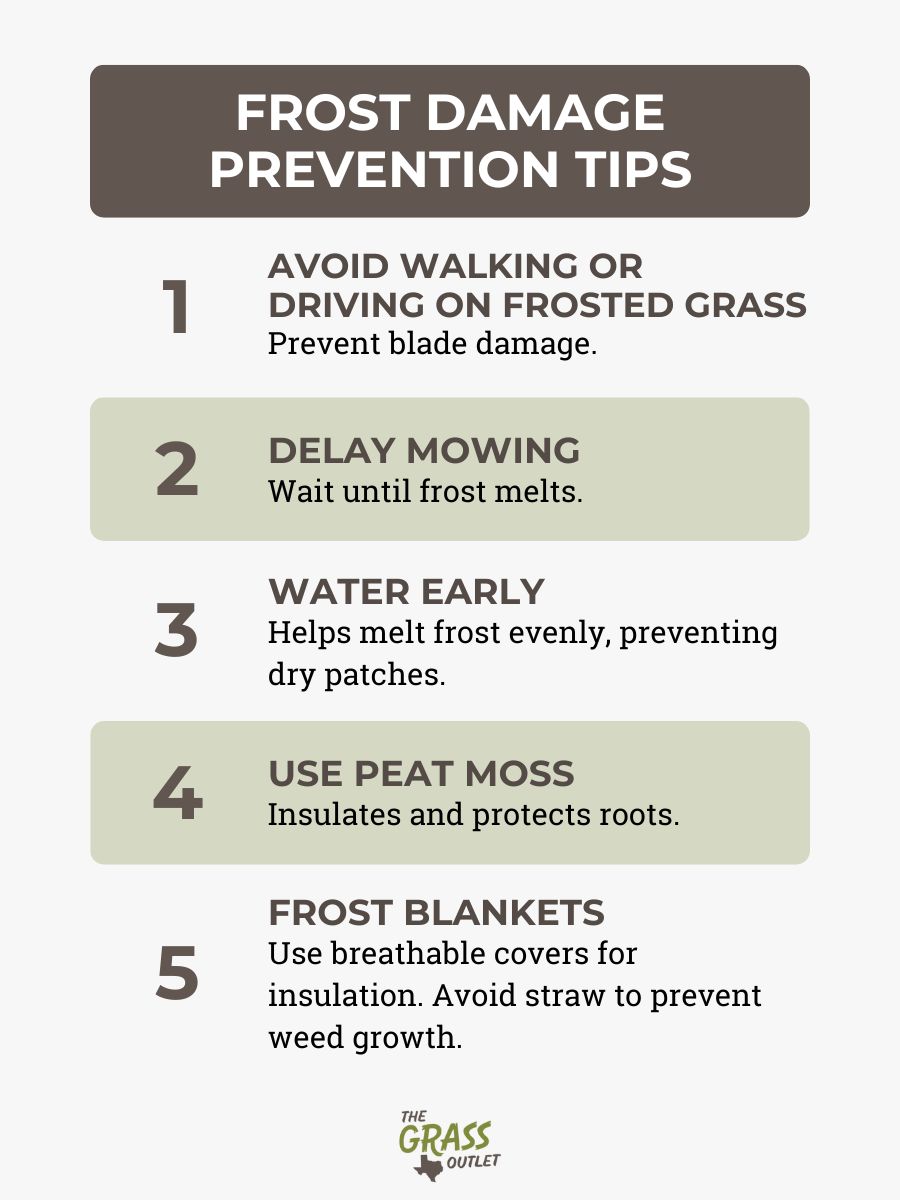
During winter, grass enters dormancy because cold weather prevents photosynthesis. It’s essential to avoid walking on the lawn when it’s covered in frost or ice, as this can lead to soil compaction and damage the grass, often resulting in dead patches in the spring.
Tip: Place stepping stones along frequently used paths to prevent grass damage. Choose natural stone, concrete, or brick that blends seamlessly with the landscape.
Also, mulch, such as wood chips or bark, is spread in high-traffic areas. Mulch not only protects the soil but also enhances the natural appearance of your yard.
Lawn Watering – Let Nature Take Care of It
Watering your lawn during winter requires a very cautious approach. Overwatering can lead to serious problems for the lawn, including freezing and grass damage. The fragile root system is particularly vulnerable during this period, so it is better to rely on nature and its cycles.
Watering is unnecessary if you live in a region where snow covers the ground for most of the winter. Snow provides natural insulation and gradually supplies moisture as it melts. However, occasional watering is recommended to ensure minimal hydration if winter is not snowy and rainfall is scarce. Before the grass dorms, species like Bermuda, Zoysia, and St. Augustine need about one inch of water per week to prepare the root system for the cold.
During winter, focus on monitoring weather conditions. Use a rain gauge or keep track of local weather reports to determine how much rain or snow has fallen. If there has been sufficient precipitation, additional watering is not required.
So, let nature take its course! Allow rain and snow to maintain soil moisture naturally, and only step in with minimal care when weather conditions call for it. This way, your lawn will endure winter in good condition and be ready to thrive when spring arrives.
Prevent Frost Damage
Frost can seriously damage your lawn, especially if proper protective measures are not taken. It occurs when temperatures drop rapidly, causing dew on the grass to freeze, typically in the early morning. Ice inside the blades expands and ruptures cell walls, resulting in damage.
The effects of frost include:
- Discoloration of the grass.
- Turning it yellow or brown.
- Often leaving the lawn with an uneven appearance due to the damage.
Additionally, disrupted cellular structures significantly slow down photosynthesis.
How to Protect Your Lawn?
- When you notice that your lawn is covered with frost, it is essential to avoid walking on it. Walking on frozen grass can cause further damage by breaking the blades and worsening the condition. Similarly, postpone mowing until the frost has melted, as lawnmower blades can inflict additional harm. Vehicles should also be kept off the lawn to prevent unnecessary compression and blade breakage.
- Lightly watering the lawn early in the morning, before the sun rises, can help speed up the melting of frost. This method allows the layer of ice to melt more evenly, reducing the risk of brown or dry patches forming on the grass.
- Grass sown in the fall is susceptible to frost and low temperatures. A thin layer of peat moss is recommended to protect it from these, which provides insulation and shields the roots from the cold. If peat moss is unavailable, other lightweight materials can be used, but straw should be avoided as it may contain weed seeds.
- Frost blankets are lightweight covers used to protect plants, including lawns, from low temperatures and frost. They are made from breathable materials such as polypropylene or polyester, which allow light, air, and moisture to pass through while providing thermal insulation.
Common Winter Lawn Problems and How to Address Them
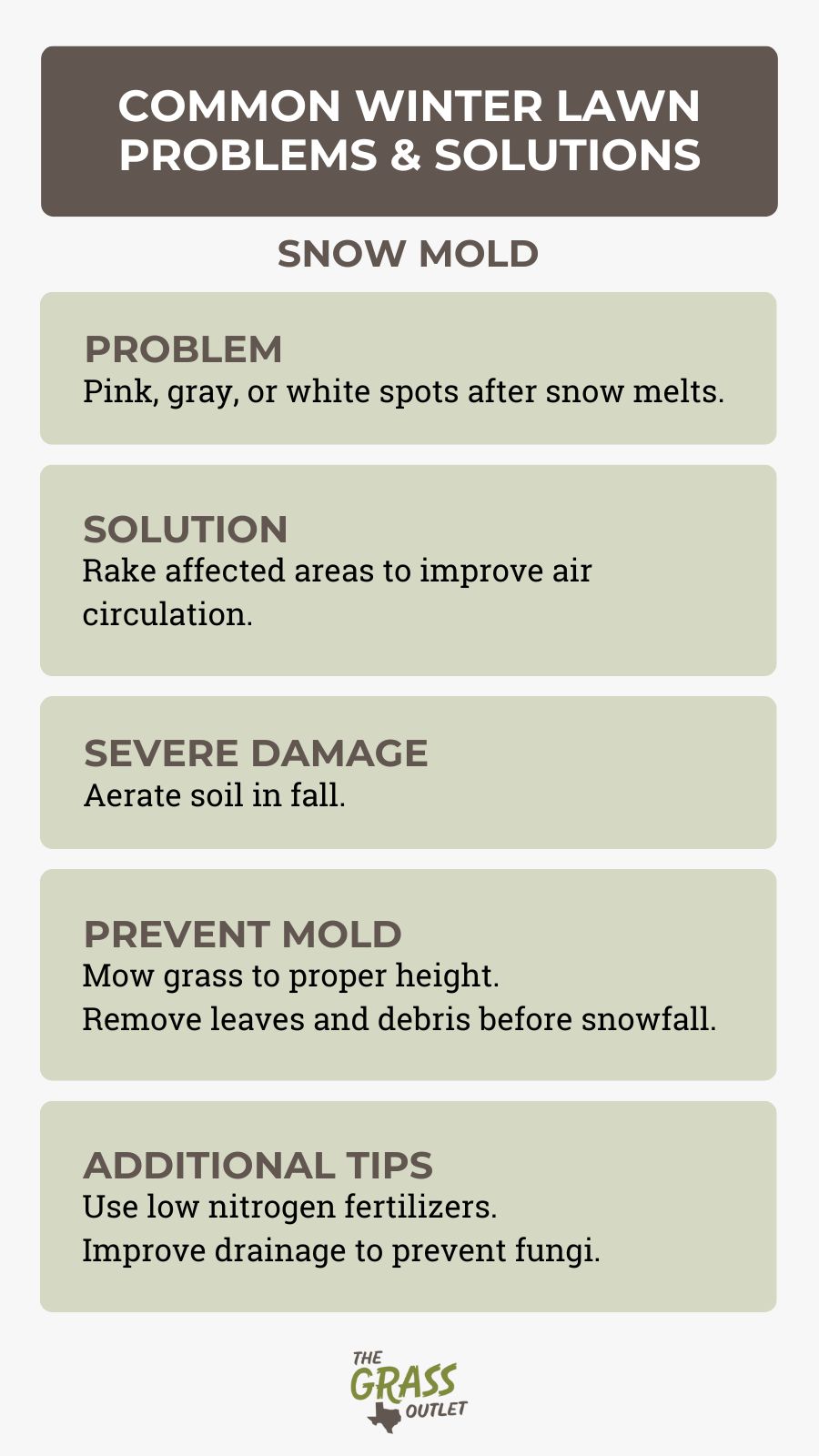
Snow mold is one of the lawn diseases that can occur during winter in regions that receive significant snowfall. It develops beneath the layer of snow and usually becomes noticeable only in spring when the snow melts.
As the snow melts, if you notice pink, gray, or white spots on your lawn, it could be snow mold. Pink snow mold is one of the most aggressive types and can cause parts of the grass to die completely. However, in most cases, lawns naturally recover without significant consequences.
When spots appear, it is recommended to gently rake the affected areas to loosen matted grass, improve air circulation, and allow the soil to dry. This is often enough to resolve the issue on its own.
However, if the damage is severe and the grass has completely died, resulting in bare patches, it is advisable to aerate the soil in the fall. This will help restore the lawn and fill in the gaps.
Proper lawn care in the fall is the best way to prevent snow mold. During the final mow of the season, it is essential to cut the grass to an appropriate height. Avoid leaving the grass too long, as it can become matted and create a favorable environment for mold growth.
Additionally, removing fallen leaves and other debris from the lawn is crucial before the first snowfall. Such debris creates ideal conditions for mold to thrive.
What are some other tips to prevent lawn diseases during winter?
- Fertilizing the lawn with nitrogen-based fertilizers should be carefully managed. Too much nitrogen can encourage excessive grass growth before winter, which is undesirable because longer grass is more prone to mold and other diseases when it matures under the snow. Instead, fertilizers with lower nitrogen and potassium content should be used, strengthening the roots and increasing resistance to cold.
- Well-drained soil prevents water retention, which can contribute to the development of fungi and root rot. If your lawn has drainage issues, consider adding sand or organic materials to improve water flow.
Regional Considerations for Winter Lawn Care
Winter care for warm- and cool-season grasses differs because they behave differently during winter.
How should warm-season grasses be maintained during winter?
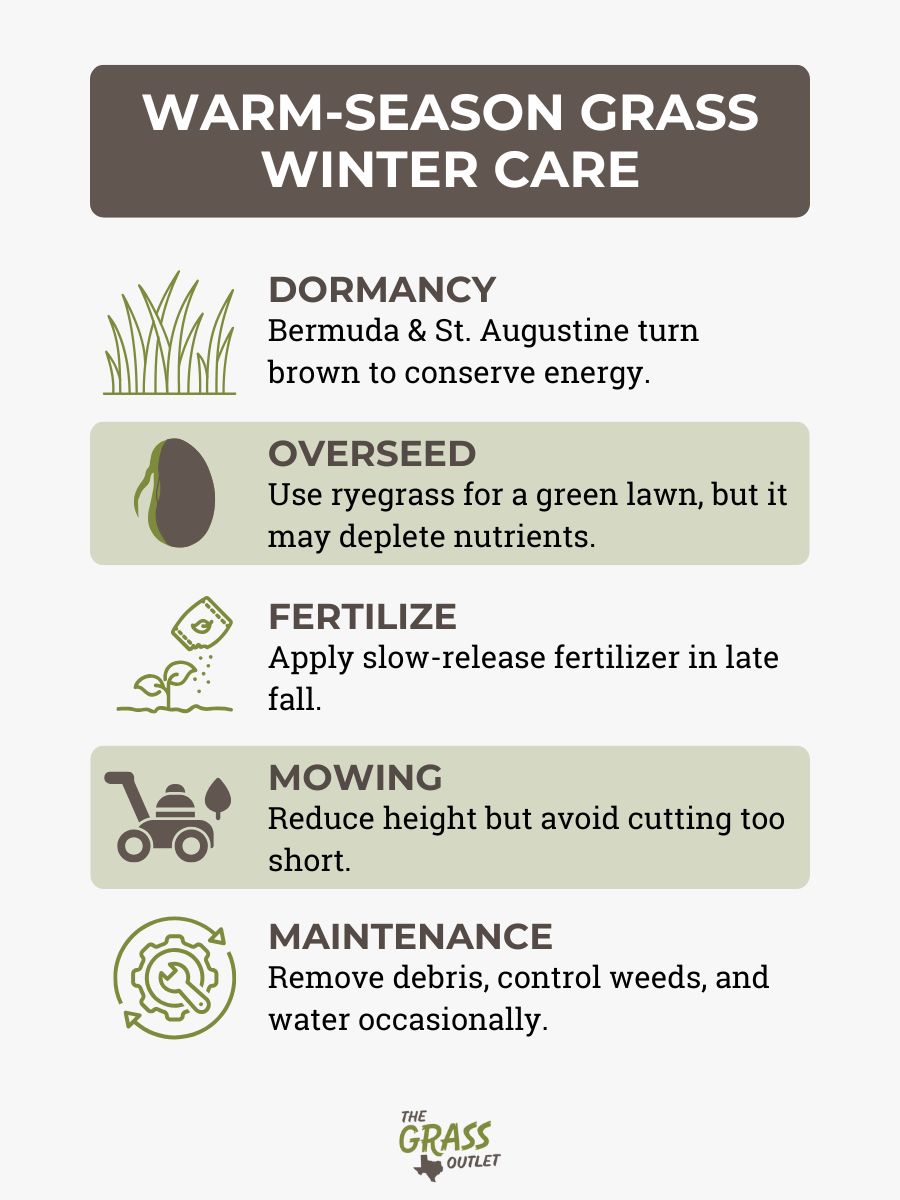
Bermuda and St. Augustine grasses enter a dormancy phase at the beginning of winter. The brown color of the leaves indicates dormancy, which is not a sign of dying but a natural hibernation phase during which the lawn conserves energy for spring growth.
What are the most important activities during this period?
- To maintain a green appearance during winter, consider overseeding with cool-season grasses like ryegrass.These grasses thrive at lower temperatures, keeping the lawn green and attractive while Bermuda, Zoysia, or St. Augustine grass remains dormant. Just be aware that ryegrass can rob your soil of vital nutrients and delay spring green-up.
- Apply a slow-release fertilizer with balanced nutrients in late fall to help the grass accumulate the necessary resources to survive the dormancy period.
- Gradually reduce the mowing height in the weeks before winter, but avoid cutting the grass too short. Some length helps with insulation, and shorter grass reduces the risk of snow mold and other diseases that may appear during the cold season.
- Regularly remove fallen leaves, branches, and other debris from the lawn. A clean lawn allows better airflow and sunlight penetration, which helps prevent fungal infections.
- Weeds can deplete the nutrients needed by your grass. Before winter, apply herbicides or manually remove weeds to ensure optimal conditions for your lawn.
- Although the grass is dormant, occasional watering is essential to prevent dehydration during dry winter. Moderate watering, without waterlogging, can prevent damage caused by drought stress.
What measures should be applied for cool-season grasses?
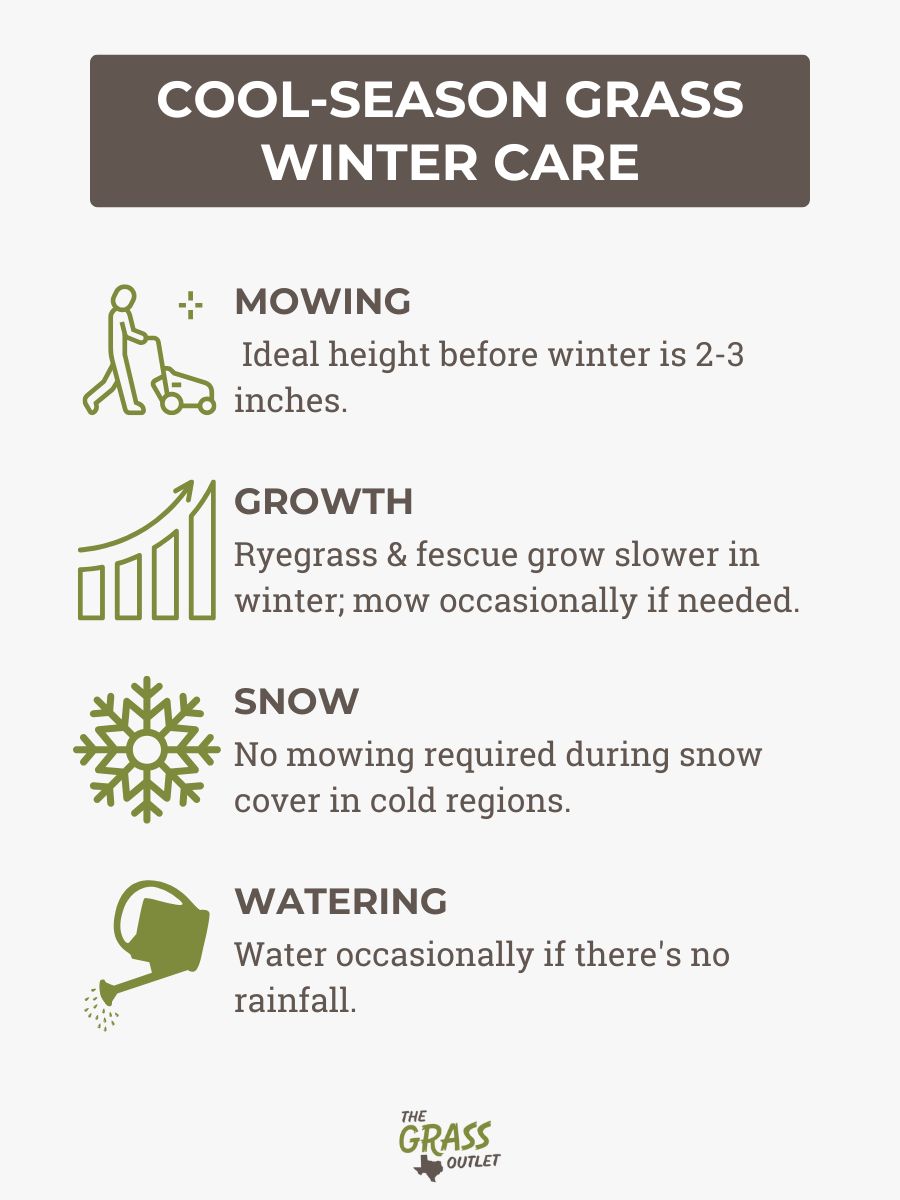
Is a 5-inch lawn too tall? Is 2 inches too short for cool-season grasses? Generally, the ideal height for mowing cool-season grasses before winter is between 2 and 3 inches.
Ryegrass and fescue will continue to grow during winter in areas with moderate climates. However, their growth is usually slower than in spring or fall. If the grass is growing, it should be mowed occasionally. When snow covers the ground during winter, mowing will not be necessary in extremely cold regions.
As for watering, occasional watering will be needed if there is no rainfall.
Preparing Lawn for Spring Recovery
When the first spring days arrive, you’ll feel motivated to prepare your lawn for the beautiful days ahead. To prepare it for lush growth, you must follow specific steps for spring lawn care.
First, be patient and avoid walking on the lawn wet and soaked from winter rain and precipitation. Wet soil is prone to damage, which can lead to compaction and permanent marks. Wait until the lawn dries enough before starting any work to preserve its structure.
Next, pick up fallen branches in winter, rake leaves, and clean up accumulated organic material. This will allow the grass to get more air and sunlight. If the layer of organic debris (thatch) is too thick, early spring is the perfect time for deep removal. This should be done before the grass begins to grow intensively.
What else can you do?
Prune shrubs early in the spring before the active growing season begins.
Salt from winter road treatments can dehydrate plants and cause bare spots along the edges of the lawn. Spring rains usually help wash the salt away, but if the damage is significant, treating the soil with gypsum can speed up plant recovery and encourage growth.
Pay attention to damage or signs of disease on your lawn, such as snow mold. If you notice a problem, act promptly to ensure a healthy return of your grass in spring.
Spring is the ideal time to fertilize your lawn and shrubs. However, you should only fertilize the grass once it has significantly greened. Once ambient temperatures are around 65°F for several days, choose a pre-emergent herbicide to prevent the development of weeds before they appear.
Application tips:
- Apply the herbicide when the soil temperature reaches about 55 °F, as this is when crabgrass begins to grow.
- Pay special attention to bare patches on the lawn and the edges of pathways, as these are the areas where weeds often appear first.
Some experts recommend waiting with aeration to avoid turning the loosened soil into fertile ground for weed seedlings, which tend to emerge during this season.
Winter Lawn Care FAQs
Do I need to mow my lawn during winter?
During winter, lawns typically enter a dormant phase, requiring minimal maintenance. Mowing should generally be avoided unless necessary. If you decide to mow, it is important to adjust the mower blade height to protect the grass. The recommended cutting height is between 2 and 3 inches, providing additional protection for the lawn during colder months.
How do I protect my lawn from frost?
Frost blankets are lightweight and breathable covers designed to protect plants and lawns from cold temperatures and frost. They are made from polypropylene or polyester, which allow light, air, and moisture to pass through while providing insulation against the cold.
To prevent damage, avoid walking on the lawn when it is covered with snow or ice. Additionally, lightly watering the lawn in the early morning before sunrise can help speed up frost melting and reduce the risk of ice formation.
Is it safe to apply weed control products in winter?
Winter annual weeds often emerge during colder months, stealing vital nutrients from your lawn and impacting its growth and health. To effectively control these weeds, it’s recommended to use pre-emergent herbicides, which prevent their germination and growth.
Conclusion
Winter can be challenging for your lawn, but with a few carefully chosen steps, you can keep it healthy and ready for spring. To prevent soil compaction and damage, avoid walking on the grass when it’s covered in snow or frost. Using pre-emergent herbicides can help control winter weeds that deplete nutrients from the soil. Make your final mow with raised mower blades to protect the grass from the cold.
While the lawn is dormant, take the time to maintain your equipment—repair or replace old parts and prepare for spring activities. With these tips, your lawn will stay in top shape all year round.
For all the information you want to know about lawn care, feel free to contact The Grass Outlet and get advice from our best experts.





